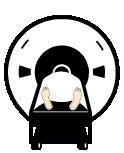Brain Injury Neuroimaging
After brain injury, “CT, MRI and EEG.brain injury neuroimaging or routine neurological evaluations may be normal.” Brain injury neuroimaging is not by any means an accurate account of brain injury or its severity.
Source: Definition of MTBI, ACRM, J Head Trauma Rehabil 1993:8(3):86-87
One important breakthrough in trauma medicine has been the development of CT and MRI. It is almost remarkable that even in the 1970’s, such tools did not exist. These scans may enabled us to see the enemy of secondary brain injury, before it kills. The enemy in these cases are often reversible conditions where surgery can save lives, such as hemorrhage, hematoma and edema. These are all parts of the pathology of the brain but can not predict existing deficits that may arise from the brain injury.
Yet, these diagnostic do not rule out even life threatening brain trauma.
Thus, when considering the relevancy of scanning in the diagnosis of TBI, it is important to understand what each of the below diagnostic tests tell shows about brain damage:
[bulleted_list style=”check”]
 CT – Computerized Tomography
CT – Computerized Tomography- MRI – Magnetic Resonance Imaging
- ENG – Electronystagmography
- Vestibular Testing
- PET – Positron Emission Tomography
- SPECT – Single Photon/Positron Emission Computed Tomography
- EEG – Electroencephalography
[/bulleted_list]
It is important to remember that even though they have come a long way as far as imaging the brain and diagnosing damage done to it that it is far from perfect with diagnosing brain injury and its latent effects. For instance, we have learned that many deficits are caused by damage to the brains frontal lobe. We also have learned that there are certain deficits suffered by brain injury survivors that are attributed to frontal lobe damage. These cognitive deficits are not going to show up in brain injury neuroimaging. All we can tell by recognizing the damage is that these deficits may occur.


